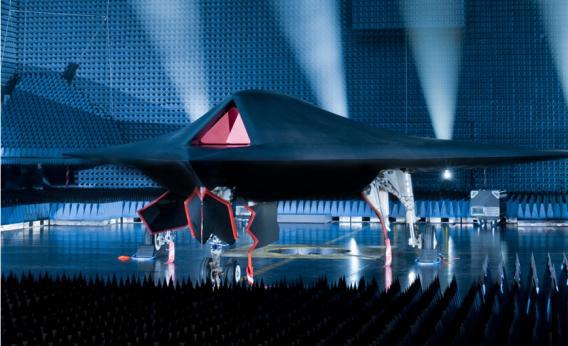Imagine a flying machine equipped with bombs and missiles, navigating the skies stealthily without human control. Soon it will be a reality: the next generation of drones.
Drones currently used in combat, like the Predator or Reaper, are navigated by pilots thousands of miles away. But the latest versions of the aircraft are being designed to fly autonomously and without direct human intervention, with a pilot taking charge only when it’s time to destroy a ground target. This kind of “thinking” drone seemed a far-fetched prospect only a few years ago. In 2013, though, things are set to change.
Earlier this week it was announced that the British military is planning to test a new stealth drone called the “Taranis” in the Australian outback this spring. The Taranis, which will carry a range of weapons, can fly autonomously and faster than the speed of sound while using intelligent sensor technology. Its manufacturers, BAE Systems, say the aim is to try to discover whether the drone can be used to strike targets “with real precision at long range, even in another continent.” If tests are successful, it could be a game changer—eventually, making traditional fighter jets like the Typhoon close to obsolete.
The British are not alone in pressing forward with this technology. The U.S. military has recently been testing its “X-47B” stealth drone, which, like the Taranis, will be capable of flying pre-programmed missions using a kind of artificial intelligence. Similarly, France, Italy, Sweden, and other countries are working on a pan-European project to develop a stealth drone called the “Neuron,” which successfully completed its first test flight last month.
Meanwhile, opposition to the aircraft is building. Last year, Human Rights Watch released a report calling for restrictions to be placed on autonomous weapons—“killer robots,” as the group described them. Existing remotely piloted drones such as the Predator remain contentious from an ethical standpoint because critics argue they can lead to a kind of video-game warfare detached from reality. (Not everyone agrees—Brad Allenby criticized the report in Future Tense.) But autonomous drones are considered even more controversial. Militaries in the United States and Europe insist they will never allow machines to make the final decision to kill. The concern, however, is that once the technology is available, that position might change over time.
There’s also fear over the damage the technology could do if it were to get into the wrong hands—like a dictator unconcerned with the ethics of who pulls the trigger, so long as the trigger is pulled. It’s worth considering, too, the vulnerabilities inherent in any computerized technology. Hackers and adversaries have shown how it is possible to commandeer drone systems. And in 2011, a Predator drone reportedly “started itself” without explanation after it was infected with a bug. If something similar were to happen to a heavily-armed autonomous drone in midflight, the consequences could be deadly.
Still, military chiefs are moving forward swiftly with their development and testing of these new warplanes. That’s why 2013, for better or worse, could well be the year the autonomous drone was born.
